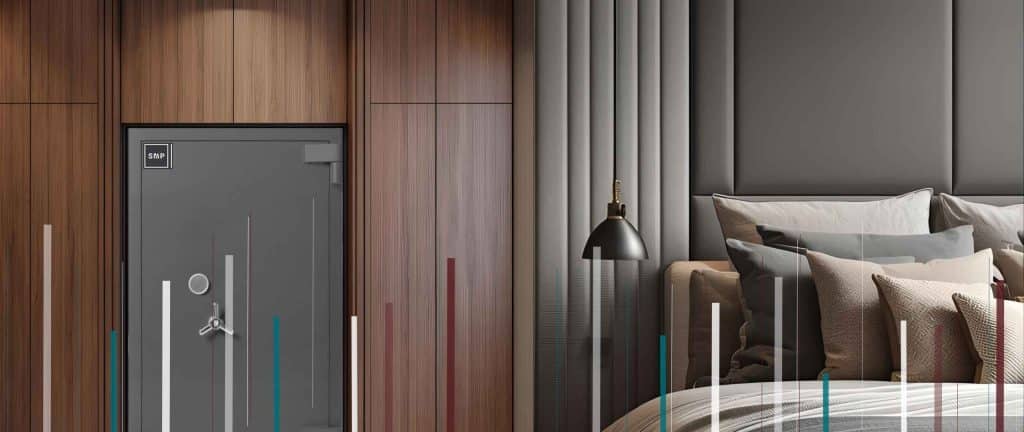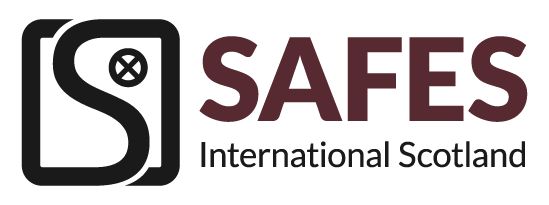Most Secure Type of Safe for Homeowners | Complete 2025 Guide
Finding the most secure type of safe for homeowners is a common challenge, especially when you want to protect valuables such as jewellery, cash, documents, watches, or sentimental items. With so many options available, homeowners often end up confused by marketing terms like “premium”, “high-security”, or “heavy-duty”.
True security has nothing to do with how a safe looks or how heavy it feels. Real protection depends on recognised certification, tested burglary resistance, proper installation, and choosing the right safe for your needs. This guide explains what makes a safe genuinely secure, which types offer the highest protection in the UK, and how to choose a safe that delivers long-term peace of mind.
What Makes a Safe Truly Secure?
A safe is only secure if it has been independently tested. The strongest and most trusted standard for residential safes in the UK is the Eurograde certification, tested under EN 1143-1. This testing process involves trained specialists attempting to break into the safe using realistic burglary tools, including drills, grinders, and cutting discs.
Only safes that pass these tests receive an official Eurograde label, which insurers across the UK recognise as proof of genuine burglary resistance.
Eurograde Levels and What They Mean
- Grade 0 – Cash rating up to £6,000
- Grade I – Cash rating up to £10,000
- Grade II – Up to £17,500
- Grade III – Up to £35,000
- Grade IV – Up to £60,000
- Grade V – Up to £100,000
These ratings are based on how long the safe can resist professional forced entry. Higher grades offer stronger protection and are often required for homes with higher-value items.
So, What Is the Most Secure Type of Safe for Homeowners?
A Eurograde III (or higher) certified safe, professionally installed and securely anchored.
This combination offers the most reliable level of protection available for private homes. Here’s why:
1. Proven Burglary Resistance
Eurograde safes are subjected to real attack tests. They are not judged on appearance – they are judged on actual performance under pressure. This makes them significantly more reliable than untested “domestic safes” sold online.
2. Strong Multi-Layer Construction
Higher-grade safes include several protective layers, such as:
- Composite barrier materials
- Thick steel plates
- Heavy-duty locking bolts
- Anti-drill and anti-cutting plates
- Reinforced internal structures
These features slow down and often completely prevent modern burglary methods.
3. Insurance Recognition
Insurers in the UK often require homeowners with high-value jewellery, watches, or collections to store them in a certified safe. A Eurograde safe meets these requirements, helping ensure your valuables are covered.
4. Optional Fire Protection
Many Eurograde safes feature fire ratings under EN 15659, offering additional protection for documents, cash, and heat-sensitive items.
Choosing the Right Eurograde Level for Your Home
Understanding what each grade offers helps you pick the safest option for your household.
Grade 0–I – Strong Basic Protection
Ideal for:
- Family documents
- Small amounts of cash
- Everyday jewellery
Grade II – Enhanced Security for Valuables
Ideal for:
- Watches
- Higher-value jewellery
- Small collections
- Important files and photographs
Grade III – High-Level Home Security
Ideal for:
- Gold
- Diamond jewellery
- Designer watches
- Specialist valuables
Perfect for homeowners who need more advanced protection.
Grade IV–V – Maximum Residential Protection
Ideal for:
- Large collections
- Rare valuables
- High-value storage required by insurers
These safes offer the highest security available for household use.
Why Installation Is Just as Important as the Safe Itself
A safe is only secure when installed correctly. Even a heavy Eurograde safe can be carried away if it’s not anchored. Professional installation ensures that your safe cannot be removed without extreme force, noise, and time — things burglars avoid.
Professional Installation Techniques Include:
- High-strength anchor bolts
- Fixing into concrete or reinforced material
- Anti-tamper fittings
- Correct wall and floor placements
- Compliance with manufacturer and insurer requirements
Anchored safes dramatically outperform uninstalled safes in real break-in scenarios.
Best Places to Install a Home Safe
Location affects both convenience and safety. A well-positioned safe is harder to locate, harder to attack, and more practical for everyday use.
Recommended Installation Spots:
- Fitted wardrobes
- Under-stairs cupboards
- Utility rooms
- Bedroom wardrobes
- Purpose-built cupboards
- Reinforced upstairs rooms
Areas to Avoid:
- Garages (often easier to access)
- Conservatories (temperature and visibility issues)
- Rooms visible from outside
Selecting a discreet, solid location adds an extra layer of security.
Helpful Additional Features to Look For
Once you’ve chosen the most secure type of safe for homeowners, consider features that make the safe easier and safer to use:
- Digital keypads for quick entry
- Mechanical locks for long-term reliability
- Biometric fingerprint access
- Internal lighting
- Fire seals for heat protection
- Adjustable shelving
- Dual locking systems
- Audit trail logging (useful for shared access)
These optional features improve convenience without compromising security.
How to Choose the Best Safe for Your Home
When making your final decision, consider the following:
1. The value of the items you want to protect
If you regularly store jewellery or luxury watches, a higher Eurograde level may be necessary.
2. Your insurance policy requirements
Many insurance providers specify which grade is required for certain valuables.
3. Where the safe will be installed
This influences size, weight, and anchoring options.
4. Who will access the safe
If multiple household members need access, digital or biometric locks may be more convenient.
5. Whether you need fire protection
Documents, passports, cash, and digital storage benefit from fire-resistant options.
If you want the most secure type of safe for homeowners, the safest and most trusted choice is:
A Eurograde III (or higher) certified safe, securely anchored and professionally installed. This delivers the strongest level of residential protection, meets insurer expectations, and provides long-term peace of mind. Whether you’re safeguarding family heirlooms, jewellery, financial documents, or personal collections, a certified Eurograde safe is the most reliable solution for home security.


